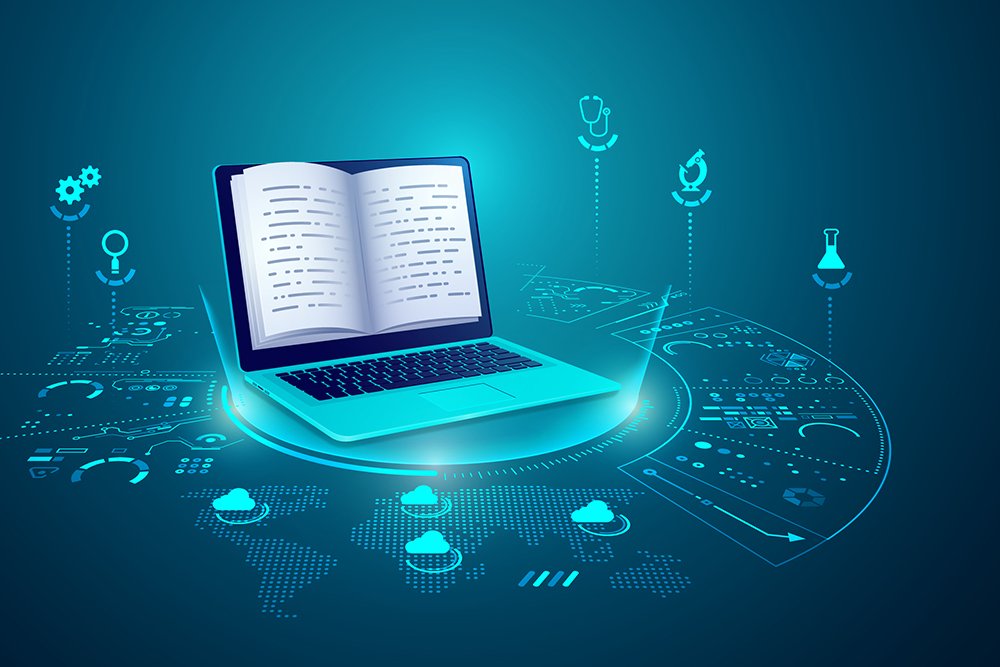People must have an opportunity to get an education. The primary education acquired through preschool, kindergarten, and the elementary school provides children with academic and social skills that prepare them for future studies, relationships, and career opportunities.
Continuing studies after high school also have multiple benefits. College graduates earn higher salaries and typically enjoy better job prospects. Unfortunately, moving to attend college isn’t always possible, and it can be expensive, deterring potential students from attending. Fortunately, technology’s transforming education, enabling more people to pursue online studies than ever before. Let’s look at what eLearning is, how it works, the types of programs you can take online, and the benefits of eLearning.
What is eLearning?

Electronic learning means delivering a course or series of lessons online. Schools once offered correspondence courses, allowing students to read assigned texts and mail assignments to complete the program. With online programs, students can listen to seminars over the internet. They may attend live lectures or discussion sessions with other students. They can interact with their instructors and submit assignments via email or dashboards. Today, elementary school, middle school, high school, and college students can pursue studies online.
How does eLearning work?

Academic institutions work with education technology companies to select an eLearning platform. Their online platform uses cloud hosting, simplifying access for clients. Cloud hosting enables the learning management system (LMS) providers to perform updates and maintenance remotely, without the school or company using the online learning platform to buy expensive equipment to run programs or hire a computer support specialist to maintain the system. Instead, users evaluate their needs and choose the digital tools suited to their program. In addition, potential clients can pursue a free trial of the learning management system, ensuring they find a system that supports a superior learning experience.
What types of programs can you take via eLearning platforms?

Students can use an online platform to pursue their master’s degrees. Graduate studies are more accessible than ever before, thanks to the internet, and the range of courses is vast. For example, you could opt to pursue a master of science in sports administration or earn a master of education in foundations in behavior analysis. There are also master’s programs in criminal justice, health care, nursing, law, pharmacy, engineering, and information technology.
Business students can also continue their studies through MBA programs online. An online master of business administration (MBA) covers financial management, strategic management, managerial economics, managing across cultures, and marketing for managers. An online MBA program offers a flexible learning schedule, allowing students to complete studies at their own pace. While some may complete the program in a year, others can take twice as long to finish their studies. In addition, course materials and lectures are accessible online.
Students pursuing higher education can earn an associate’s degree, bachelor’s degree, or doctoral degree online. So whether you’re interested in studying fire sciences, health care, human services, business, education, or information technology, electronic learning options are available.
Businesses can also use online platforms for instruction. Many companies have training requirements that must be met, and coordinating in-person sessions can be costly and complex. Using an online learning platform enables staff to stay in compliance and fulfill their training requirements.
What are some benefits of eLearning?
The need for online learning platforms intensified with the start of the COVID-19 pandemic in 2020. Students and teachers throughout the United States were sent home to prevent the virus from spreading, prompting schools to implement remote learning. As a result, teachers interacted with students and delivered academic instruction, ensuring students continued their studies.
Remote learning’s enabled students who live in rural areas to access their education for decades. Australia’s School of the Air program began in the 1950s, with courses delivered over shortwave radio. Since the introduction of the internet, students can now access their studies online through video instruction. This means teachers can effectively add a visual component to studies, using charts and other tools to explain concepts or processes to their students.
The internet’s made it possible to pursue higher education through online studies. Electronic learning platforms have also made it possible to provide remote instruction to elementary, middle, and high school students.
